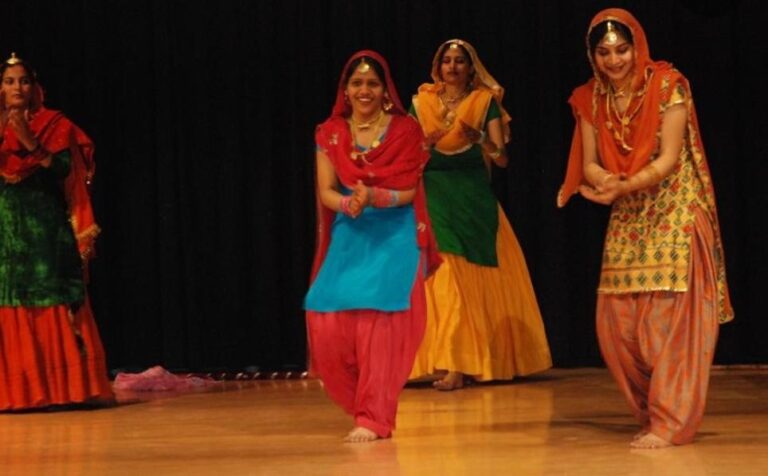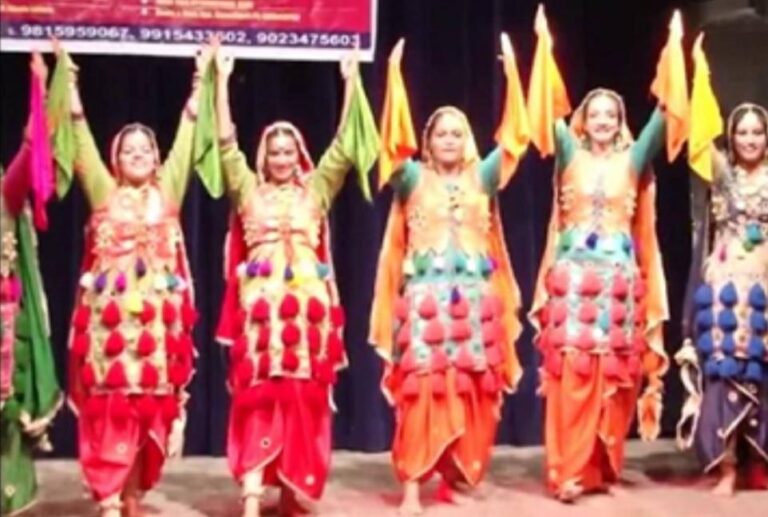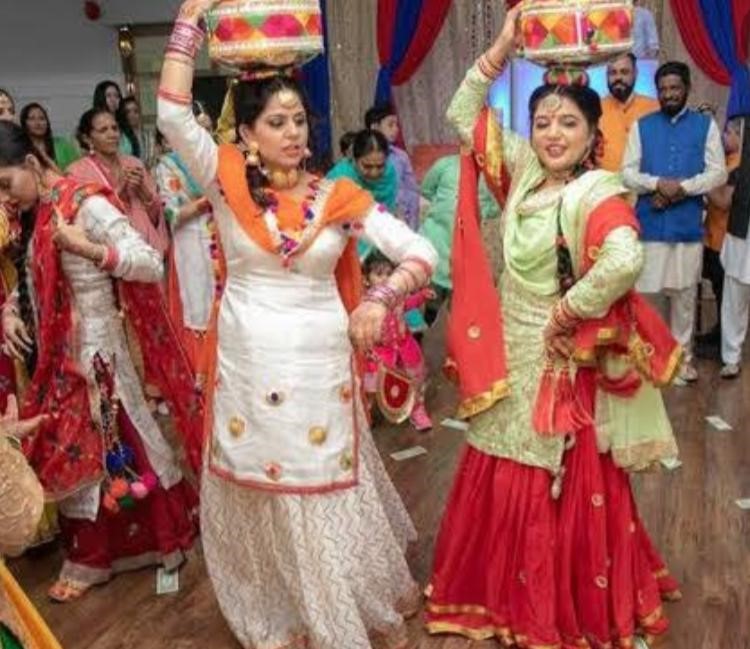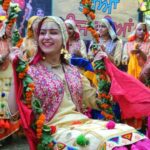Punjabi dances are a variety of religious dance moves of the Punjabi individuals native to the Punjab locale, riding the line of India and Pakistan. The style of Punjabi moves goes from exceptionally high energy to moderate and held, and there are explicit styles for people. A portion of the moves are common while others are introduced in strict settings.

Table Of ContentToggle Table of ContentToggle
The primary Punjabi society dance for females is giddha or giddhah and for men or for all kinds of people is bhangda or bhangra. The moves are regularly performed on occasion of festivity, like collect (Visakhi), weddings, melas (celebrations) like Lohri, Jashan-e-Baharan (Spring Festival) and so on, at which everybody is urged to move. Hitched Punjabi couples typically dance together. The spouse moves in the style of male Punjabi moves, oftentimes with arms raised, and the wife moves in the style of female Punjabi moves.
Punjab is an exceptionally rich state in regards to the styles and number of people moves that you can discover here. It has various assortments of society moves including Bhangra and Giddha among the most noticeable and famous. Not to pass up something to be thankful for nowadays, numerous non-Punjabis likewise get into the soul and fun of the society moves of Punjab, as you at times see an European, African or Chinese face in various Bhangra contests. Such non-Punjabis made Punjabi dance in a real sense part of their own neighborhood culture.
The Punjab individuals’ richness and excitement are emphatically shown in their society moves. The means are loaded with discourse, developments, verbal remarks, development nuances, and uninhibited freedom it’s a heart dance! With the drumbeat or the beat of some other society music instrument, the energetic feet of the Punjab public are immediately set to surrender opposition and quickly bring forth a people dance-a declaration of the successful soul; a blast of feelings; an unexpected arrival of energy. Punjab moves are the immediate portrayal of the energy and eagerness of Punjab’s dynamic youth. Society moves of Punjab are brimming with unfamiliar impacts. It is just in Punjab where people don’t have the dance.
1. Giddha

Giddha is performed by Punjab’s young ladies. The dance is a demonstration of ladies’ energy and essentialness and has a vivid climate. It isn’t restricted to a specific occasions, by the same token. The dance can be performed on any get-together. The ensemble is normal family stuff with a couple of light decorations. Giddha’s dance style snaps the shoulders and curves the lower body section. Applauding helps the dance as an instrument too. The dance utilizes no instrumental music.
Acted in an enormous circle, Giddha’s singing is classified “Boli or Biloyan,” typically using passionate articulations. The dance is a family show with every one of the ladies making a delightful show with ordinary singing and moving.
2. Bhangra

Bhangra was initially committed to collecting however later changed its shape with some modernization, changing melodic hardware and developing moving examples. Bhangra’s energy with a conventional Punjabi Dhol and Jhanjhar has slowly gotten mainstream across every single Indian state.
Bhangra outfit is Lungi and buttonless coat. The artists likewise utilize distinctive shading tissues. Wearing Pug (turban), an indication of Punjabi pride. Ladies perform it with conventional Salwar-Kameez and Chunni, regularly wears male artists.
3. Jhoomer

Jhoomer is known for his energy and energy. It began from the districts Balochistan and Multan. The dance is moderate and musical in rhythm. The word Jhumur gets from “Jhoom” which means influencing delicately. The exhibitions normally center around adoration and different feelings. The “bliss move” is likewise at times alluded to as in the show, the dance reproduces creature developments, field furrowing, seed planting, reaping, and other such exercises.
Different types of Jhumar exist, like Satluj Jhumar, Chenab Jhumar, Beas Jhumar, and Multani Jhumar. This dance is extremely famous among Punjab people moves and is known for its beauty and class specifically.
4. Luddi

This is a disco of win, where individuals make distinctive head developments. The ensemble is a free, plain shirt. The artists put their backs on one side, and their appearances on the other. The development of the body is crooked and like a snake. There’s a guitarist in the dance room also.
5. Dankara
Regularly known as the Gatka dance, this is an occasion dance. Two people, each conveying bright fights, dance around one another as one with the drums and tap their stays together. The dance is frequently a piece of a marriage festivity.
6. Jaago

The strict significance of Jaago is that of awakening! At the point when a marriage is in the home, young ladies dance through the roads of the town, holding a pot (gaggar) improved with eased up candles and singing Jaagu melodies. The melody subjects are social, and ordinarily a touch of joke, for the most part focused on elderly folks, obliges the music.
7. Sammi

Customarily Sammi ladies from the Sandalbar region perform Sammi, presently in Pakistan. The artists dress in brilliantly shaded kurtas and full-streaming lehengas dresses. The dance is inseparable from a particular silver hair adornment.
8. Julli
This dance is finished by Muslim blessed men Juli, called pirs. They as a rule dance in seclusions (khangas). The dance is proceeded as individuals sit. Once in a while, they dance around the grave of the preceptor. The artist typically dons dark.
9. Malawi

Malawi Giddha is one of Punjab’s famous people moves for the most part performed by the area’s lone rangers. It arose in regions, for example, the regions Bathinda, Muktsar, Ferozpur, Faridkot, Mansa, Sangrur and Patiala. The dance utilizes a wide scope of instruments, like Chimta/utensils, which is the customary melodic percussion instrument of South Asia, regularly utilized in popular Punjabi Giddha and Bhangra music. A further instrument utilized in the exhibition is Dholaki.
Navigate to this page for more details about this new blog.







